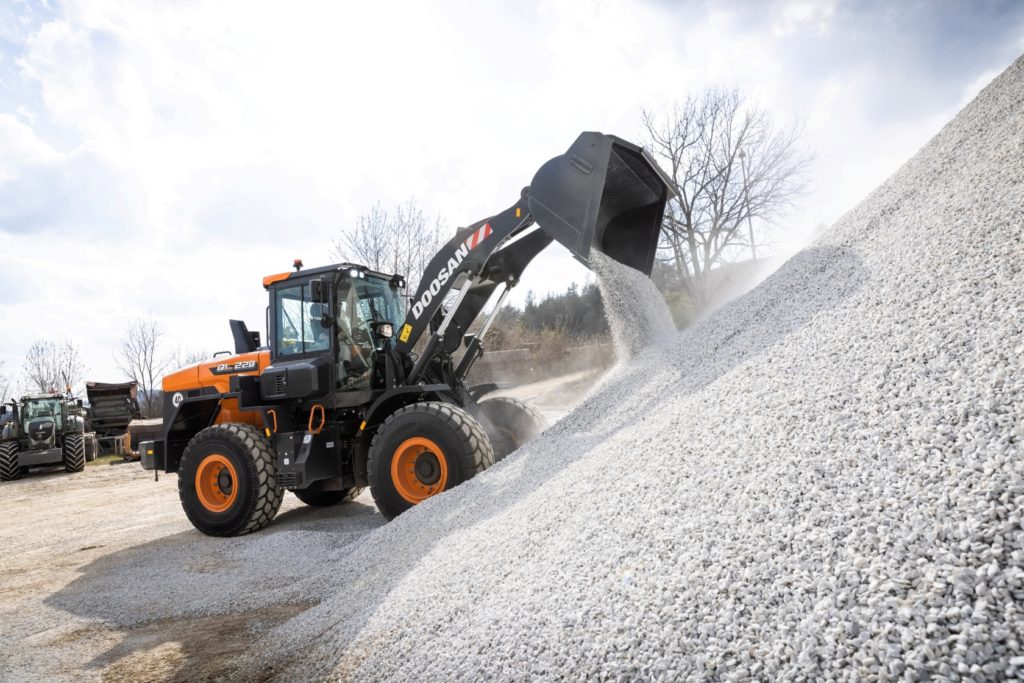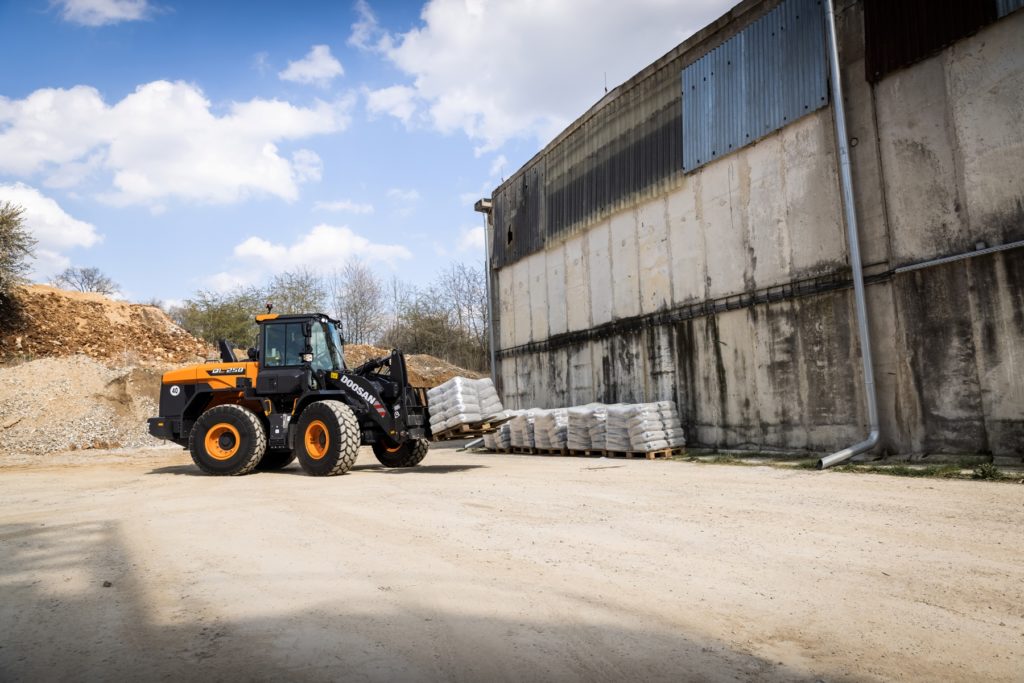DOOSAN has launched the new DL220-7 and DL250-7 wheel loaders, following on from the introduction of seven larger DL-7 machines in December 2020.
Like the existing models, the DL220-7 and DL250-7 feature a Stage V-compliant engine. Both models are described by the manufacturer as having ‘smooth and responsive’ hydraulics and auxiliary hydraulic connections. They are equipped as standard with a third spool valve with settable flow and detent function, providing a constant flow for hydraulically driven attachments. A fourth spool valve is available as an option.
Charlie Park, CEO of Doosan Infracore Europe, said, “We have been delighted with the reception we received for the launch of the first seven models in the DL-7 wheel loader range at the end of last year. The new DL220-7 and DL250-7 provide all of the same innovations provided by the larger models ensuring market-leading operator comfort, fuel economy, productivity and durability.”
Operators can control attachments via the proportional switch on the joystick. Various tyre options are available to cover a range of conditions and applications. The loaders can also be ordered with an optional 300kg counterweight, depending on the application.
Standard bucket capacities on the DL220-7 and DL250-7 are 2.3 and 2.5 m3, respectively. Both loaders are available as HL versions featuring a high lift arm and the 300kg counterweight.
The LIS (Load Isolation System) is said to provide a ‘smoother ride and higher comfort’ for operators, as well as higher productivity due to improved stability when the machine is moving. The lift arm is cushioned by a hydro-pneumatic accumulator linked to the lift hydraulic system, acting as a shock absorber.
The machines have automatic 4-speed powershift transmission and Limited Slip Differential (LSD) axles as standard. Options include a 5-gear powershift transmission with Lock-up torque convertor and heavy duty HDL axles.
Doosan said improvements have been made throughout the powertrain to provide operators with an 11% increase in travel speeds up to a maximum of 40km/h.
Power is provided by the new Doosan DL06V 6-cylinder engine, with an output of 119kW (160HP) and 128kW (172HP), respectively. The engine meets Stage V emission regulations without the need for exhaust gas recirculation through the use of selective catalyst reduction, diesel oxidation catalyst and diesel particulate filter after-treatment technologies.
The Doosan Smart Guidance System (DSGS) is a new feature which analyses the driving habits and behaviour of the operator and provides a score and guide of the operator’s driving pattern to show fuel economy, efficiency and durability by category.
The cab boasts a 14% larger glass window area compared to the previous DL-5 models. The DL220-7/DL250-7 wheel loaders also offer the option of electrically adjustable rear view mirrors. Full LED working lights are installed (two on both the front and rear as standard, with the option of four or six each at the front and rear). The lights on the rear bonnet have an automatic strobe function to indicate when the loader is reversing.
Using the new Doosan Smart Key system, the operator can start the machine using a keyless device. The Smart Key system provides remote door control, door lock and unlock, door release, searching and other functions. The control panel also includes two USB sockets.
The new cab has a Grammer Actimo XXL seat with adjustable horizontal and vertical suspension settings, a pneumatic lumbar function and seat heating as standard. A further feature is the new EMCV (Electric Main Control Valve) joystick fully integrated in the armrest, which Doosan explained provides operators with ‘smoother and precise controllability’ of the lift arm and attachments. Features available via the EMCV system include Automatic Return-to-Dig, Bucket Tilt Kick-out and the Bucket crowd stop position and shock prevention.
The DL220-7 and DL250-7 loaders are factory-installed with the latest DoosanCONNECT wireless fleet monitoring system.










